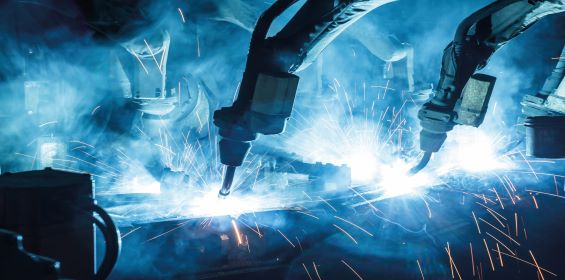Manufacturing SMEs record drop in output in September but growth on the horizon
Published: 18 October, 2024
The NatWest UK SME Business Activity Index of the manufacturing sector – which measures month-on-month change in the combined output of SMEs in manufacturing - scored 49.6 in September, down from 54.3 in August. The latest reading signalled a marginal drop in manufacturing SME output.
NatWest’s index is a key indicator of the health of the UK SME manufacturing economy. A PMI reading over 50.0 indicates growth or expansion, while a reading under 50.0 suggests contraction.
Following a brief spell of growth in August, production volumes at small and medium-sized firms fell slightly in September. Panel members attributed the drop in output to reduced order book volumes amid muted domestic and overseas demand for manufactured items.
Meanwhile, there was a modest decrease in incoming new orders in September, thereby stretching the current run of contraction to four months.
September signalled ongoing retrenchment of headcounts at manufacturing sector SMEs. Survey respondents mostly linked the decrease in staffing numbers to the non-replacement of leavers, in part due to elevated wage costs. The rate of job shedding was nonetheless only modest.
Output confidence on the horizon
SME manufacturers remained confident of a rise in output from present levels over the next 12 months. New product launches, marketing efforts and firms' long-term business expansion plans were cited as reasons for optimism.
However, the degree of positive sentiment fell to its lowest in the year-to-date, which mirrored the weaker trend seen across the manufacturing sector as a whole in September.
Input price inflation drops to six-month low
September data signalled a further uplift in operating expenses faced by SME manufacturers. Panellists mentioned higher shipping fees, energy costs and raw material prices, due to tighter supply conditions. Some firms also noted higher packaging costs, reflecting increased paper and cardboard prices.
The overall rate of cost inflation was nonetheless the least pronounced since March and lower than across the manufacturing sector as a whole.
SME goods producers passed through some of the cost burden to customers by increasing their selling prices in September. The rate of charge inflation was only modest and the softest since May.
Laura Capper, Head of Construction and Manufacturing at NatWest comments: “While the drop in output and new orders is certainly a challenge for SME manufacturers, it’s encouraging to see that the reduction in staffing remains modest, and confidence in future growth remains. The focus on new product launches and strategic business expansion plans shows that many firms are still positioning for long-term success, despite current headwinds. Additionally, the cooling of input price inflation offers relief, allowing manufacturers to better manage costs and remain competitive as they navigate this period of softer demand.”
https://www.linkedin.com/company/natwest-group/







